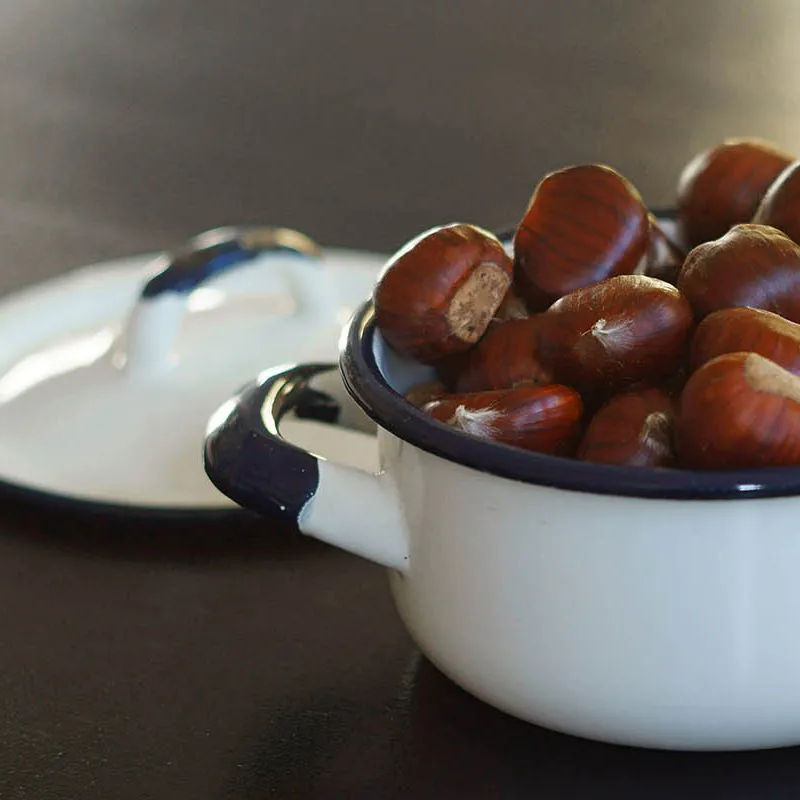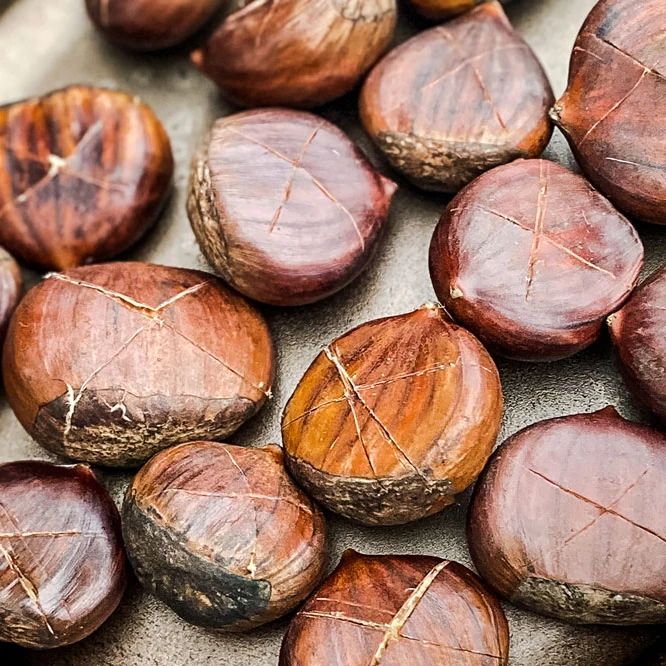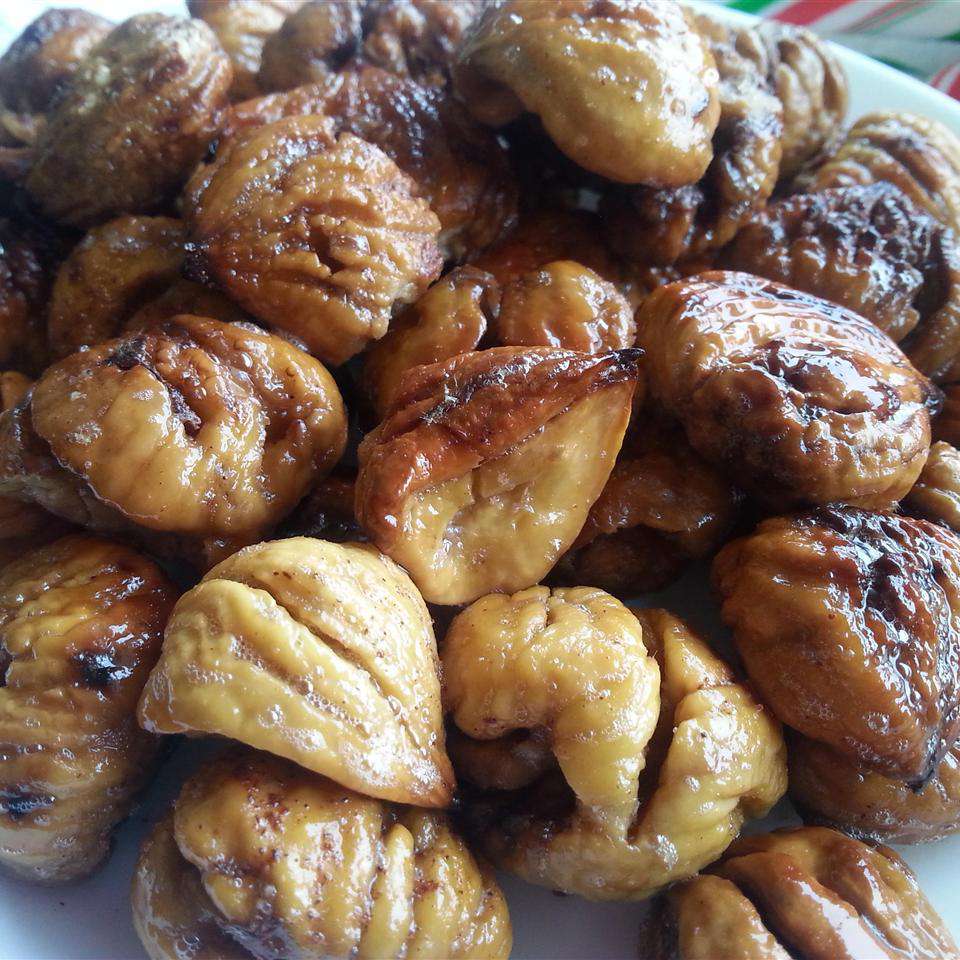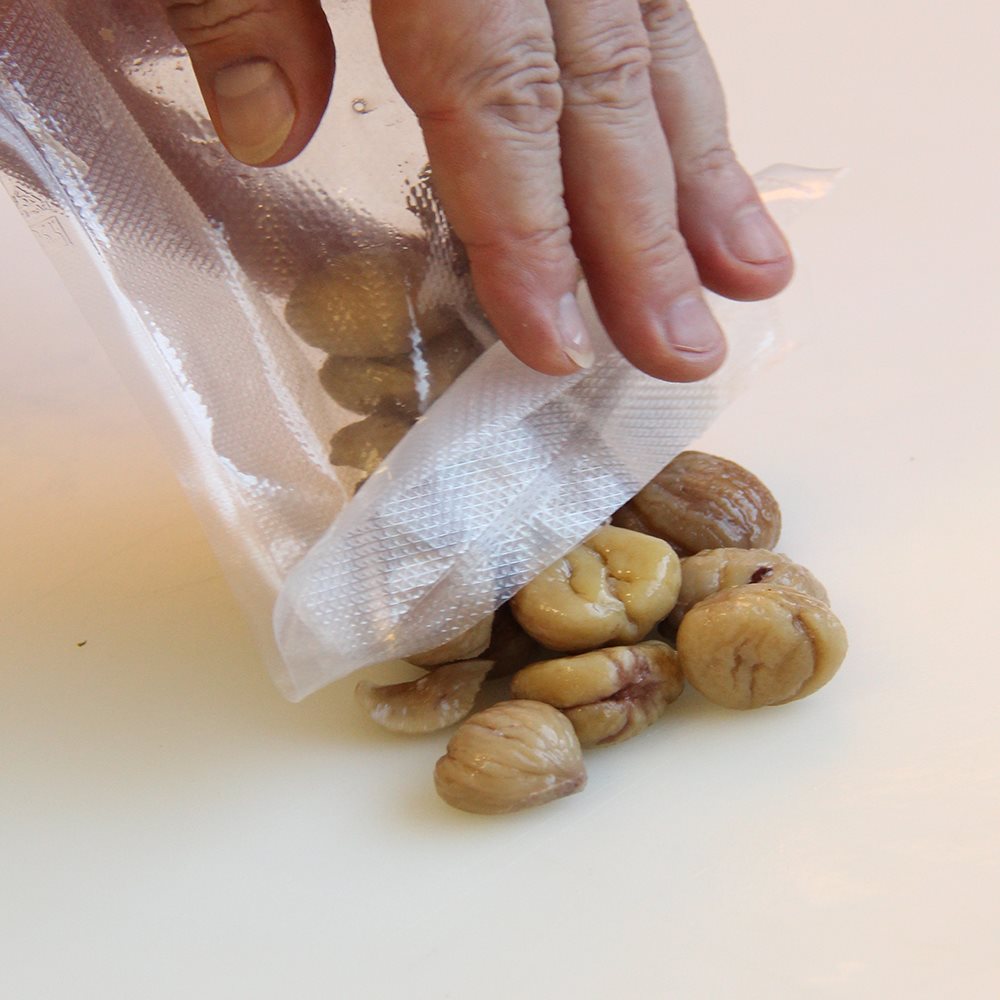How To Cook Chestnuts On Stove
I. Introduction

A. Brief overview of the popularity and versatility of chestnuts in cooking
How to cook chestnuts on stove? Chestnuts are a beloved ingredient in many cuisines around the world, valued for their rich, nutty flavor and creamy texture. They are incredibly versatile and can be used in a wide variety of dishes, from savory to sweet, making them a staple ingredient in fall and winter cooking. Whether roasted, pureed, or used in stuffings and soups, chestnuts add a unique and delicious taste to any recipe.
B. Explanation of the health benefits of chestnuts
In addition to being delicious, chestnuts also offer numerous health benefits. They are low in fat and high in complex carbohydrates, making them a great source of energy. Chestnuts are also rich in vitamin C, which supports the immune system, and they contain important minerals such as potassium and magnesium. Additionally, they are gluten-free and can be a great alternative for those with gluten sensitivities.
II. Selecting and preparing the chestnuts
A. Choosing fresh and firm chestnuts
When selecting chestnuts, it’s important to choose ones that are fresh, firm, and free from any mold or blemishes. Fresh chestnuts have a smooth, glossy appearance and feel heavy for their size. Avoid any chestnuts that feel light or rattling, as this may be a sign that they are old and dry.
B. How to properly score the chestnuts before cooking
How to cook chestnuts on stove? Before cooking, it’s essential to properly score the chestnuts to prevent them from exploding. Using a sharp knife, carefully make a small incision or an “X” shape on the flat side of each chestnut. The scoring allows steam to escape during the cooking process, preventing the chestnuts from bursting open.
C. Soaking the chestnuts in water to keep them moist
To keep the chestnuts moist during cooking and make them easier to peel, it’s recommended to soak them in water for about 30 minutes before roasting, boiling, or grilling. This step helps to soften the outer shell, making it easier to remove once the chestnuts are cooked.
III. Roasting the chestnuts on the stove

When it comes to the cozy and comforting flavors of fall, few things compare to the nutty, earthy taste of roasted chestnuts. And while many people associate chestnuts with outdoor open fires, you can easily recreate the experience at home on your stovetop. Here’s a guide to roasting chestnuts on the stove for a delicious and seasonal treat.
A. Using a cast iron skillet or a roasting pan for stovetop roasting
How to cook chestnuts on stove? The first step in stovetop roasting chestnuts is to use a cast iron skillet or a roasting pan. These types of cookware provide even heat distribution, which is essential for properly roasting the chestnuts. Make sure to choose a pan that is large enough to hold the chestnuts in a single layer, allowing them to cook evenly.
B. Adding a small amount of water to the pan for steam during cooking
To prevent the chestnuts from drying out during the roasting process, it’s helpful to add a small amount of water to the pan. The steam created from the water will keep the chestnuts moist and help them cook more evenly. To do this, simply pour a quarter of an inch of water into the bottom of the pan before adding the chestnuts.
C. Stirring the chestnuts regularly for even cooking and to prevent burning
Once the chestnuts are in the pan and the water has been added, it’s important to stir them regularly. This will help ensure that they cook evenly on all sides and prevent them from burning. Use a wooden spoon or spatula to gently toss the chestnuts every few minutes, keeping a close eye on their progress.
IV. Seasoning and serving the roasted chestnuts
After the chestnuts have been properly roasted, it’s time to season and serve them for maximum enjoyment.

A. Adding a pinch of salt or other desired seasonings before roasting
Before roasting, you can add a pinch of salt or other desired seasonings to the chestnuts to enhance their flavor. This could include spices like cinnamon, nutmeg, or even a drizzle of honey for a touch of sweetness. Simply sprinkle the seasonings over the chestnuts and toss them to coat before placing them in the pan to roast.
B. Allowing the chestnuts to cool slightly before serving
Once the chestnuts are finished roasting, allow them to cool slightly before serving. This will not only prevent you from burning your fingers, but it will also give the chestnuts a chance to firm up and develop their full flavor.
C. Serving the roasted chestnuts in a bowl or on a platter for sharing
Finally, transfer the roasted chestnuts to a bowl or a platter for serving. Chestnuts are best enjoyed warm, so serve them as soon as they have cooled slightly. Whether you’re enjoying them as a snack on a cozy night in or serving them as a festive appetizer at a gathering, roasted chestnuts are sure to be a hit. And by following these simple steps for stovetop roasting, you can enjoy the seasonal flavors of chestnuts anytime, anywhere. Cheers to a delicious and heartwarming fall season!
V. Enjoying the roasted chestnuts
A. Exploring different serving options such as with a glass of wine or hot chocolate
One of the best ways to enjoy roasted chestnuts is to pair them with a glass of wine or hot chocolate. The rich and savory flavor of the chestnuts complements the sweetness of the hot chocolate or the boldness of the wine, creating a truly indulgent and satisfying experience. Whether you’re hosting a holiday gathering or simply unwinding after a long day, serving roasted chestnuts with a drink is a great way to elevate the experience and savor the moment.
B. The versatility of roasted chestnuts in recipes such as salads and stuffing
Roasted chestnuts are not only delicious on their own, but they can also be used in a variety of recipes to add depth and flavor to your dishes. For example, you can chop up roasted chestnuts and mix them into a hearty winter salad for added crunch and nuttiness. Additionally, they can be used in stuffing for poultry or as a topping for creamy soups. The versatility of roasted chestnuts makes them a great ingredient to have on hand for all of your cooking adventures.
C. Sharing the experience of eating roasted chestnuts with friends and family
Lastly, one of the best things about enjoying roasted chestnuts is sharing the experience with friends and family. Whether you’re gathered around a cozy fire or enjoying a picnic in the park, passing around a bowl of warm, roasted chestnuts is a simple yet meaningful way to connect and bond with your loved ones. The act of cracking open the shells and savoring the tender, flavorful chestnuts together creates a sense of warmth and togetherness that is truly special.
How to cook chestnuts on stove? In conclusion, roasted chestnuts are a delightful and versatile snack that can be enjoyed in a variety of ways. Whether you’re pairing them with a drink, incorporating them into recipes, or sharing them with loved ones, roasted chestnuts are sure to bring joy and satisfaction to any occasion. So, this holiday season, be sure to treat yourself and others to the delicious experience of enjoying roasted chestnuts. Cheers to good company and good food!
